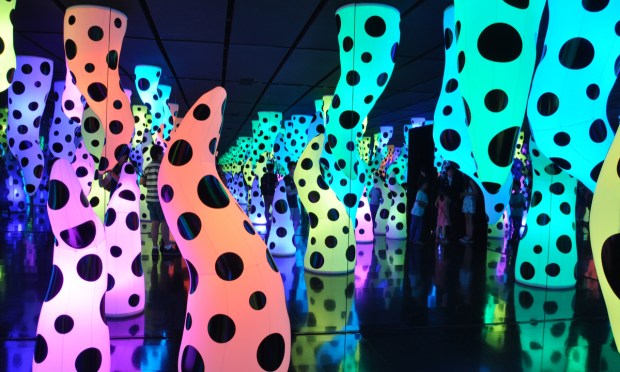Wealthy Shoppers Swap Quiet Luxury for Festive Flair This Holiday

According to affluent shoppers, quiet luxury — understated refinement, subtlety, and minimalist elegance — is out. So what exactly does that mean for retailers, especially this holiday season?
State of Quiet Luxury
According to Fashionphile, luxury shoppers are abandoning subtlety in handbags from renowned brands. In fact, shoppers are discarding the “if you know, you know” mindset in favor of more prominent and attention-grabbing styles.
Although quiet luxury brands such as Loewe, Celine and Bottega Veneta have experienced a 34% increase in popularity, the demand for bold prints has surged even more when compared to their understated counterparts. For example, polka dots have increased by 71%, and sell-through rates for pieces from the Louis Vuitton and Yayoi Kusama collaboration increased 51%.
What Quiet Luxury Did
But before we kick quiet luxury out the door, it’s worth noting what the phenomenon, fueled by TV shows like “Succession,” has done for the quiet luxury/retail landscape.
Quiet luxury champions meticulously crafted products, without succumbing to ostentatious logos or conspicuous displays of affluence. What initially began as a mere trend has blossomed into an enduring ethos, stoking the aspiration to possess revered brands such as Brunello Cucinelli and Loro Piana.
“Exclusivity and rarity will allow a company to last a century. It’s not easy, but this is what we believe in,” said Brunello Cucinelli, executive chairman and creative director of the fashion house, during the company’s earnings call Tuesday (Aug 29).
“Overexposure has always worried me as it is not exclusivity, and luxury is exclusivity, rarity and uniqueness, when customers feel that a product was made almost solely for them,” Cucinelli said.
Read more: Driving Sales Through Exclusivity Takes Time, Says Brunello Cucinelli
What Shift to Loudness Means
As consumers gravitate toward bolder prints and products, quiet luxury might lose a bit of steam, but loyal customers who understand quality will prevail. However, for consumers inclined toward bolder choices, here’s the current state of retailing.
As per findings from a PYMNTS report, 67% of retail customers anticipate price hikes in the coming 12 months. Consumers do not foresee inflation returning to its usual levels until the close of 2024. In light of this outlook, consumers are accepting elevated price tags and showing a preference for statement pieces that lean towards trendiness.
About 60% of consumers have reduced their spending on clothing and accessories, but only 4 out of 10 have opted for more budget-friendly brands.
As per insights shared during earnings calls, shoppers with higher incomes have been patronizing large-scale retail chains. Similar to the broader consumer base, these affluent shoppers also prioritize convenience and value, regardless of the location or mode of commerce where transactions occur.
Read more: Luxury Retail’s Loyalty Programs Give Big Box Retailers an In-Store Roadmap
And according to Fashionphile, Gen X and millennial shoppers are at the forefront of the luxury resale market, as they wield considerable influence through their regular visits to the discounted pages on the preloved platform’s website.
What Retailers Can Do
In light of these discoveries, there remains a window of opportunity for retailers to revamp their product selections, aligning them with the vibrant and textured preferences that consumers are seeking this holiday season. This overhaul can encompass clothing, accessories, and even packaging, all contributing to the creation of a visually enticing seasonal identity.
To maximize the appeal of these offerings, retailers can adopt immersive in-store experiences characterized by captivating displays and interactive features that invite customers to physically experience the textures of the products.
They can also introduce virtual try-on options for online shoppers, allowing them to visualize how the items appear and feel when worn.

